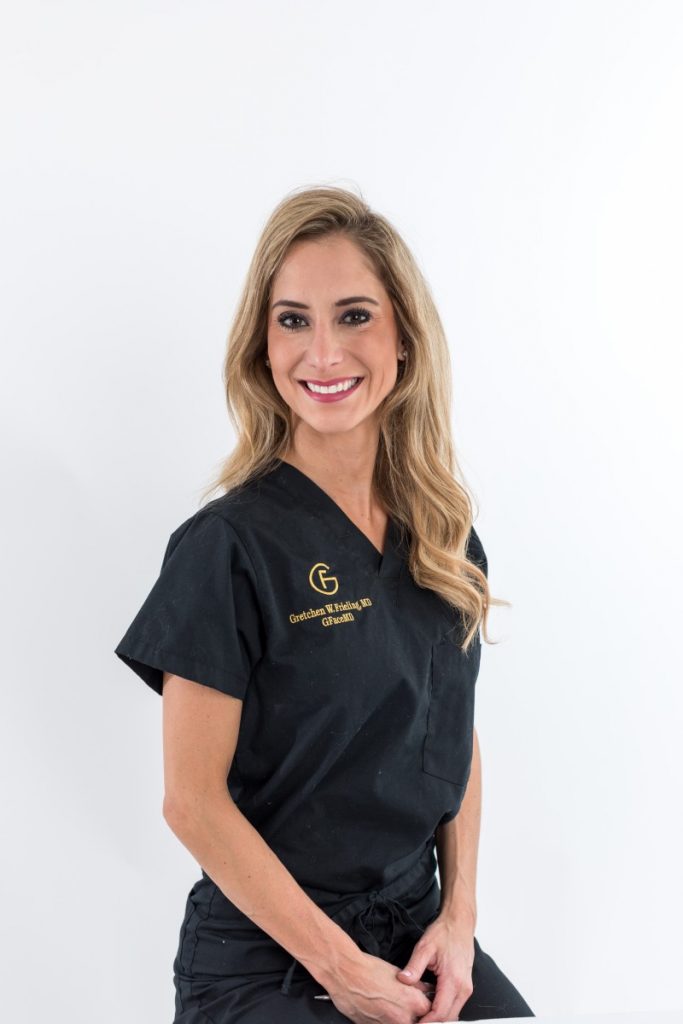What to look for on YOUR skin- Mole Check!
We ALL have a list of “check-ups” we have to get done, and one of these (if not the MOST important one) should be an annual skin check.
It is truly important to be in tune with your skin during all seasons of the year. At least once a month, you should examine your skin, and have someone else take a look at your back. Lesions that appear new or changing, itch, bleed or scab and don’t heal, are lesions you should be aware of and monitor closely. Get to know your skin well! Use this guide as a roadmap to get to know your own skin!
Normal/Benign Moles
A normal mole is symmetric and has an even color (brown or tan). It can be flat or raised. They are generally under 6mm in diameter (width of a pencil eraser) but can be larger or smaller. Some can be present at birth (congenital nevi), but typically they develop during childhood or early adulthood. These moles typically stay the same size and shape. Some may eventually fade or develop a white ring around them (halo nevus).
Benign moles are generally cured on complete excision and don’t grow back. They don’t invade tissues or spread to any other part of the body.
The ABCDE’s Of Suspicious Moles
- A= Asymmetry – Difference between the two halves of a lesion
- B= Border – Irregular in shape or poorly defined border, with scalloped or notched edges. Melanomas that occur in the nail bed often involve the cuticle (“Hutchinson’s sign”).
- C= Color There is color variation between different areas of one lesion. Different shades of tan, brown, or black are most common, but you can also see white, blue, or red areas.
- D= Diameter – Typically, melanomas are greater than 6mm in size at the time of diagnosis. However, they can be larger or smaller.
- E= Evolving – A lesion that looks different than other’s on an individual’s skin, also known as the “ugly duckling” and/or a lesion that is changing rapidly in size, is worrisome. See your Dermatologist immediately.
In general, if a mole stands out from others on your skin, you should take note, monitor it, and see a dermatologist if you feel it’s changing rapidly. The most common place for a melanoma in men is the back and in women is the lower leg.
Feel free to contact Dr. Frieling with any questions at info@gfacemd.com.
While melanoma is definitely the most serious skin cancer, there are other types, including but not limited to basal cell carcinoma and squamous cell carcinoma. These have different characteristics. We’ll save those for another article!
References: -https://www.cancer.gov/publications/patient-education/skin.pdf
Dr. Frieling is a Harvard-trained Dermatopathologist with over ten years of experience as a leader in the dermatology and pathology fields. She combines her artistic eye, a steady hand, perfectionistic qualities, and medical and anatomical expertise, to give her patients impeccable, unmatched results. When it comes to cosmetic procedures, specifically injectables, Gretchen has mastered the art of re-defining and re-vitalizing the face by eliminating fine lines and wrinkles and re-establishing volume with her “less is more” approach. She listens to patient’s requests and concerns and explains the optimal procedures to meet each unique situation. Dr. Frieling believes in prevention and is passionate about helping others achieve their best self, both inside and out! Dr. Frieling is dedicated to establishing and maintaining genuine and unique relationships with her clients, with utmost trust and confidentiality.

